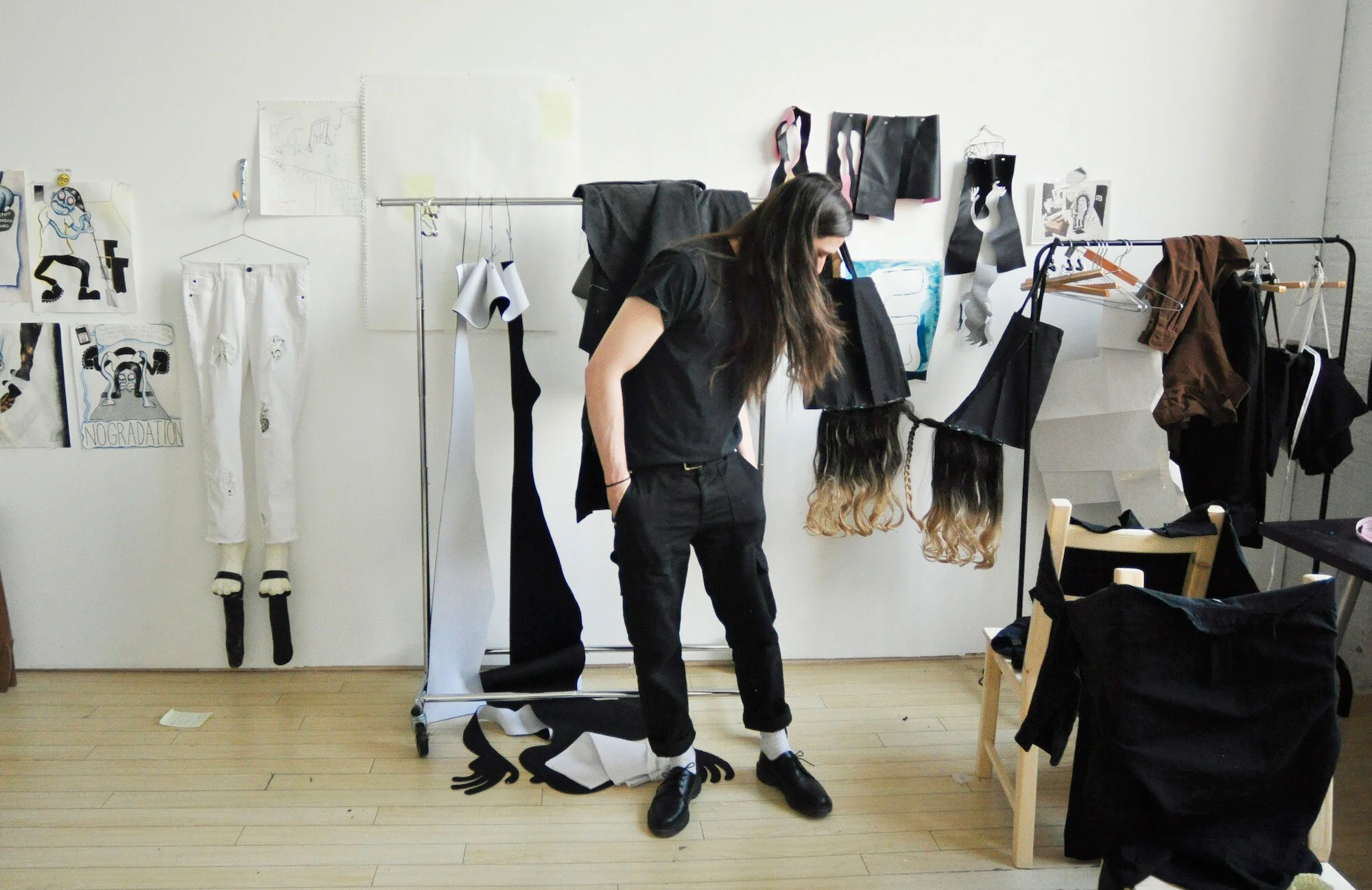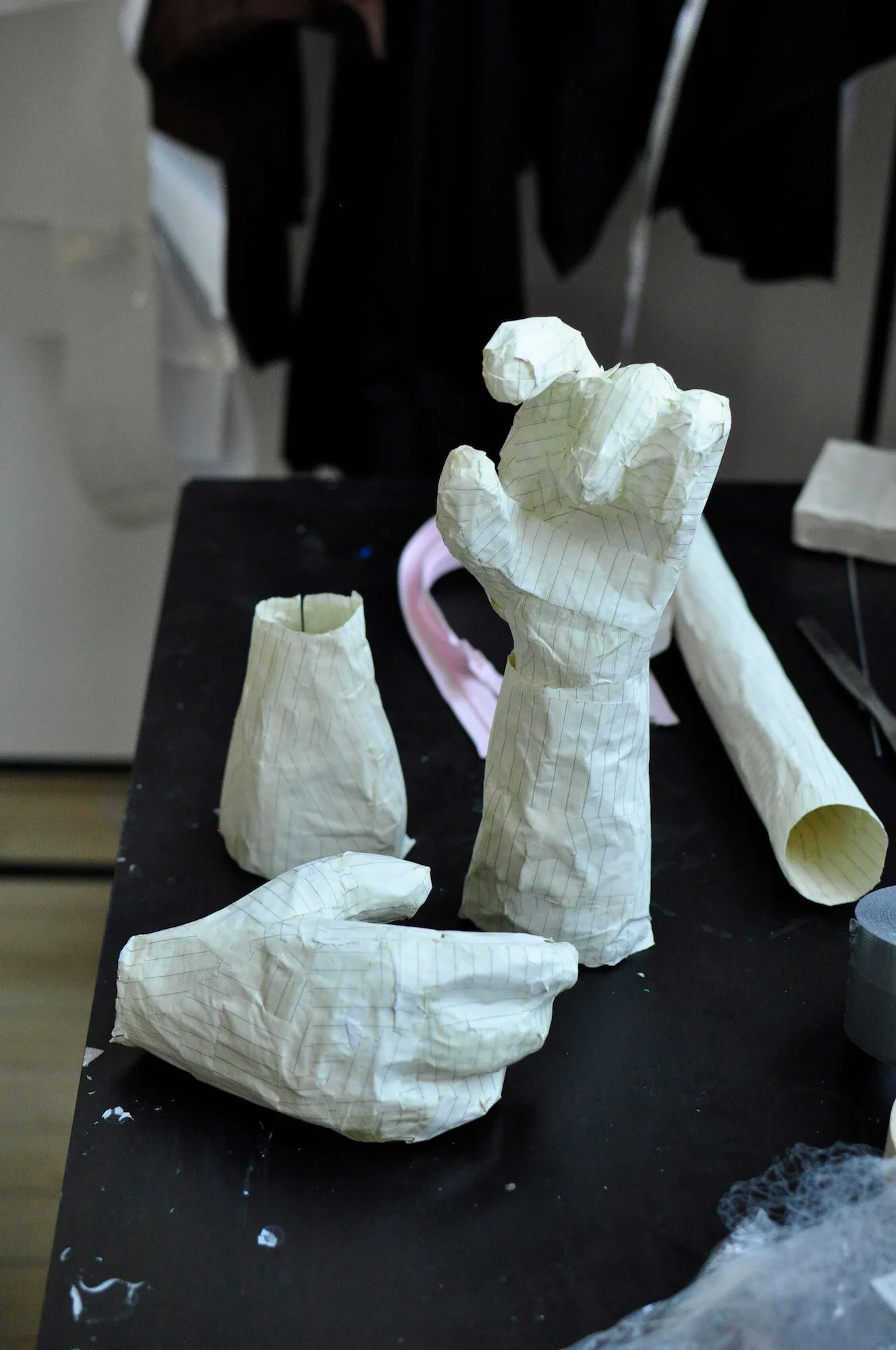In the Studio with Walter Scott
by Anna Kovler
Mar, 2020
It’s a sunny Thursday afternoon as I head across town to Toronto’s east end and Walter Scott’s studio - a bright room with high ceilings where his works in progress seem camouflaged amid the studio furniture. There are a couple of chairs draped in a split-open black shirt, clothing racks, tote bags and packages of fake hair. Comic-style drawings pinned to the wall feature some of the same motifs as the sculptural works. In them, a character based on the artist himself negotiates with a high level of anxiety a variety of things splitting apart. Scott tells me he’s been exploring Carl Jung’s idea of the shadow self, and the feeling of being made up of conflicting parts, of living in a grey-zone like a constant state of indeterminacy.
In a well-known anecdote about his youth, Jung believed he was made up of two halves, #1 and #2. Number one was the boy capable of regular activities, while Number two was reclusive, wiser, and steeped in his dream life. In addition to the idealized Number two was the shadow, or dark side of the individual, full of undesirable qualities they repress and try to hide. Several motifs in Scott’s recent work evoke this split personality including tall boots that trail behind a character, elongated flip-flops that function as a shadow, ghost figures, and conjoined articles of clothing. Pointing to the body in various material ways by using accessories, clothes, and papier-mâché hands and feet, he elucidates a world of multiple personalities, and self-doubt.
Scott doesn’t remember a time when he wasn’t drawing comics. “I gravitated to it instinctually very early on,” he says. While his popular Wendy comic features a young female Caucasian artist, his newest character is a version of himself, complete with his distinctive long hair and moustache. This shift possibly quells the most common questions people were asking him about Wendy: Is this me, or is it you, or is it someone we know? The answer is none of the above. “These narratives are neurotic fantasies,” explains Scott. “It's the best and worst-case scenario of someone who is like this person. It’s fiction; it’s not actually reality …but it could be argued that fiction is more accurate than reality.”
Something about Scott’s take on comics ties in perfectly to both Jung’s shadow self and the ambiguous relationship between reality and fiction. His comics have a very strong effect on people, which comes from his cutting observations about the art world that are always spot-on and also wildly exaggerated. It’s never easy to recognize or admit one’s dark side, but in the world of Scott’s studio I find some reassurance that I am not crazy, and definitely not alone.
Walter Scott’s drawings are currently on view at Arsenal Contemporary Art in New York as part of This Sacred Vessel on view until April 26, 2020. Recent exhibitions include “Extension of Doubt” at Cooper Cole in Toronto. Upcoming engagements include a screening of his new animated film The Pathos of Mandy, as part of the Images Festival in Toronto.
Works in progress at Walter Scott’s Toronto studio, 2020
Works in progress at Walter Scott’s Toronto studio, 2020


